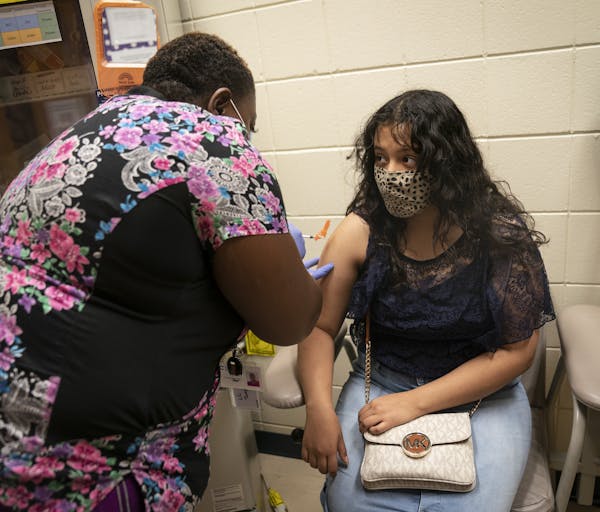University of Minnesota researchers are dangling the irresistible lure of free string backpacks at the Minnesota State Fair to study how masks fit different faces differently and offer varying protection against the coronavirus that causes COVID-19.
While the general consensus is that any covering over the mouth and nose offers more protection than no mask at all, the U's Linsey Griffin said more research is needed about which types work best for different people.
"We're hopefully using this data so the university can make better recommendations to everyone on campus," said Griffin, an assistant professor of apparel design and co-director of the U's Human Dimensioning Lab, "and so we have a larger database to prove that one mask is better for certain faces or one mask is going to be more protective."
The research opportunity has proved popular during the fair, even if mask-wearing in general has not. Many visitors at the fair on Wednesday ignored a recommendation to wear masks in outdoor crowds and indoor exhibits, which is consistent with overall state trends.
The share of Minnesotans who said they wore masks in public most or all of the time peaked at 87% in early May and was better than the national average, according to the COVIDcast tracker of pandemic trends maintained by Carnegie Mellon University.
However, that rate plummeted to 20% this summer after Gov. Tim Walz lifted a statewide mandate, and has only returned to 42% this month now that masks are recommended, but not required, in high-risk transmission areas. Minnesota's mask-wearing rate is below the national average of 62%, the survey data shows.
Griffin said participants will gain confidence through the research by knowing which masks work for them and how to wear them properly.
"One of the misconceptions is that the material that the mask is made of makes the biggest difference when it's actually the fit that is going to be the bigger predictor of whether the mask is protecting you or not," she said. "It's kind of an interesting way to give them that feedback so they understand what they should be looking for in the future."
Researchers are evaluating the fit and effectiveness of common surgical and commercial-grade masks on participants. The final day of the study is Monday, the last day of the State Fair.
The fair study is the latest in a series of research efforts by Griffin and her team to evaluate mask fit and effectiveness — work that has already prompted them to design a mask from alternative supplies that could be used in the event of another shortage.
At the start of the pandemic, shortages of materials such as elastic limited the supply of masks even for front-line caregivers such as doctors and nurses. The public initially was discouraged from wearing masks, partly to conserve supplies.
The U researchers developed a mask out of fabric made by Cummins Corp. for engine filters and found that it was breathable and passed filtration standards for commercial masks. The most effective style came from more than 100 prototypes and tests that found that everything from the placement of the chin strap to the direction of staples affected filtration.
The final design maintained protection in testing across a group of people with different demographics and face sizes.
"It's a problem that you see across the board in trying to fit a large population," Griffin said. "If you have originally built [a mask] for a male consumer, because that is who is wearing it the most, and now you have a more diverse population wearing it, there are going to be fit issues."
The prototype is on display in the university's Driven to Discover building on the fairgrounds.
Jeremy Olson • 612-673-7744

Want to share info with the Star Tribune? How to do it securely

'Safe recovery sites' would offer syringes, naloxone and more to people using drugs. The plan could be in peril.
New Minnesota GOP leaders seek peace with party's anti-establishment wing

Who is Republican Lisa Demuth, Minnesota's first House speaker of color?



